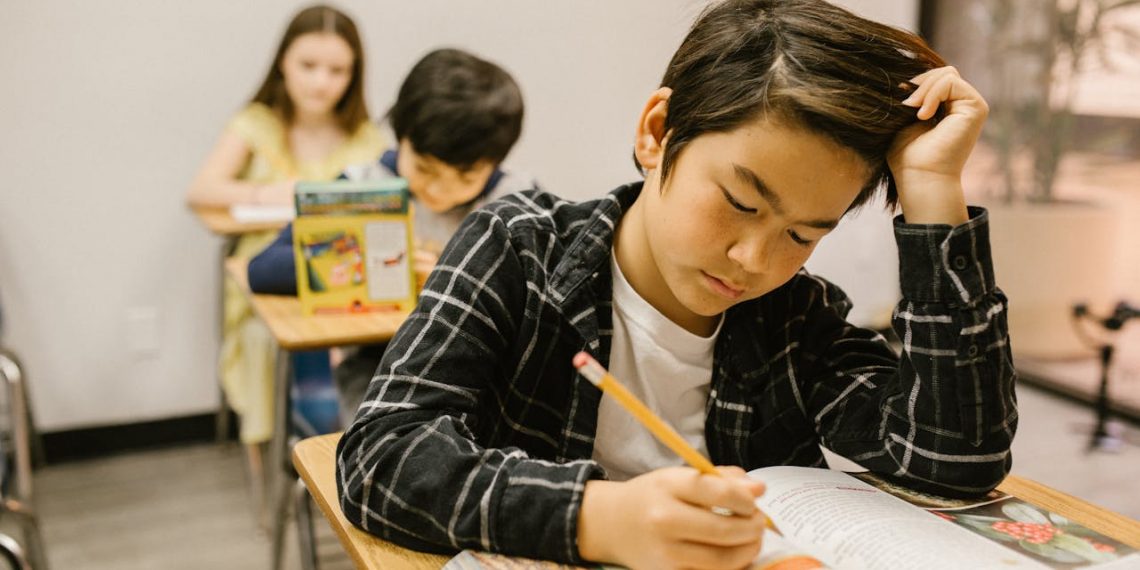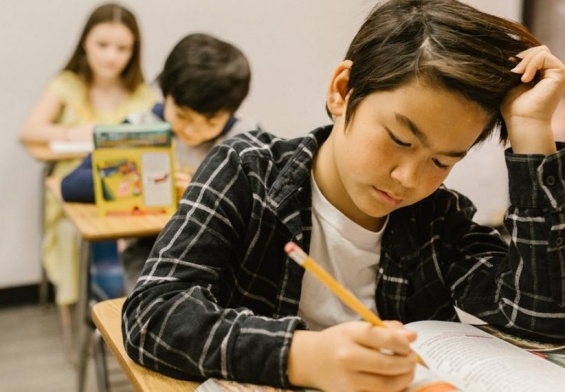Originally posted on: https://www.fredeo.com/education/get-creative-engaging-test-prep-activities-for-different-learning-styles/
Preparing for tests doesn’t have to be a monotonous task. In fact, with the diversity of learning styles among students, sticking to traditional study methods might not only be ineffective but also demotivating for many. The key to transforming test preparation from a dreaded chore into an engaging and enriching experience lies in recognizing and catering to the unique needs of different types of learners. Visual learners, for instance, process information best when it’s presented in a graphical or pictorial format, while auditory learners excel when the material is delivered through sound. Kinesthetic learners, on the other hand, prefer a more hands-on approach, learning best through movement and physical activity.
Understanding these differences is crucial in developing test prep strategies that are not just effective, but also enjoyable. This article delves into a variety of creative study methods tailored to suit these diverse learning styles. We explore the world of gamified test prep, which brings the excitement and engagement of gaming into the learning process, making study sessions something students can actually look forward to. Collaborative study groups, another focus of our exploration, leverage the power of social learning and peer support, making studying a more interactive and less isolating experience. Additionally, we delve into the vast array of engaging online resources available today, which can transform the solitary act of studying into an interactive and dynamic process.
These innovative approaches are designed to make test preparation not just more effective but also more enjoyable for learners of all types. By stepping away from one-size-fits-all methods and embracing a more personalized approach to learning, educators and students alike can unlock the full potential of test prep, turning it into a journey of discovery and enjoyment rather than a tedious task to be endured. This shift in perspective and approach can lead to not only better test scores, but also a more positive attitude towards learning in general.
Understanding Learning Styles
Before diving into the myriad of test prep activities, it’s crucial to understand the three primary learning styles, each with its unique characteristics and preferences for absorbing information:
- Visual Learners: These students thrive on visual stimuli and understand information best when it’s presented in a visual format. They benefit from the use of charts, diagrams, videos, and written instructions. Visual learners often find success in reading and visualizing concepts to grasp complex ideas, making mind maps, and utilizing color-coded systems to organize notes and information. Their ability to quickly interpret visual data makes them particularly adept at remembering information presented in graphs, charts, or diagrams.
- Auditory Learners: These learners excel when information is delivered through sound. They prefer listening to lectures, engaging in group discussions, and using verbal repetition as a study technique. Auditory learners often find it helpful to read text aloud and use mnemonic devices that are spoken or sung. They are particularly skilled at following oral instructions and can benefit significantly from participating in study groups where verbal interaction is a key component of the learning process.
- Kinesthetic Learners: Kinesthetic or tactile learners prefer to learn through movement and doing. They understand and remember information best when they are physically engaged in the learning process. This might involve hands-on experiments, building models, or using physical objects to explore concepts. Kinesthetic learners often find traditional classroom settings challenging because they benefit from a more active learning environment where they can move around and engage directly with the material. They excel in environments that incorporate physical activities, such as role-playing or constructing physical models of the concepts being studied.
By incorporating test prep activities tailored to these learning styles, educators and students can create a more inclusive and effective study environment. Understanding these differences is the first step in developing a personalized approach to learning that can enhance engagement, improve retention, and ultimately lead to more successful test outcomes.
Creative Study Methods for Different Learners
1. Visual Learners Test Prep
For visual learners, incorporating imagery can make test prep engaging. Mind maps and infographics are excellent tools for organizing information visually, helping students see the connections between concepts. Flashcards, especially those with diagrams or symbols, can also be effective. Online platforms offer free resources for creating and sharing these visual tools, making test prep both accessible and engaging.
2. Auditory Learners Test Prep
Auditory learners benefit from discussions and explanations. Study groups are particularly effective for these students, providing a platform for verbal interaction and collaborative learning. Podcasts and educational videos can also be valuable resources, offering explanations and discussions on various topics. Encouraging auditory learners to explain concepts aloud, either in a group setting or through voice recording, can further enhance their understanding and retention.
3. Kinesthetic Learners Test Prep
Kinesthetic learners thrive with hands-on activities. Interactive simulations, experiments, and role-playing scenarios can bring concepts to life, making learning an active process. For subjects like vocabulary, incorporating physical movement, such as writing words while bouncing a ball, can improve memorization and engagement. Gamified test prep, which often includes moving or interacting with physical objects, can also be highly effective for these learners.
Gamified Test Prep
Gamified test prep transforms the traditional study process into an interactive and enjoyable experience, leveraging the principles of game design to enhance learning and motivation. By incorporating elements such as points, levels, badges, and leaderboards into test preparation activities, students are encouraged to engage more deeply with the material and achieve their learning goals in a fun and competitive environment. This approach is particularly effective because it taps into the innate human desire for achievement and recognition, making the process of studying feel less like a chore and more like an engaging challenge. Games designed for vocabulary building, math puzzles, and science quizzes can turn the repetitive task of review into an exciting adventure, where each correct answer brings the learner one step closer to their next achievement.
Gamified test prep is versatile, catering to a wide range of subjects and learning styles. For visual learners, interactive quizzes with visual cues and puzzles can enhance recall and engagement. Auditory learners might find games that incorporate storytelling or require listening to instructions before proceeding to the next level more appealing. Kinesthetic learners can benefit from games that use physical activity or touch-based interactions on digital devices. Additionally, the immediate feedback provided in gamified learning helps students quickly identify areas of strength and weakness, allowing for targeted study and improvement. With the advent of various educational technology tools and platforms, accessing gamified test prep has become easier, offering students a diverse array of options to make their study sessions more productive, personalized, and, most importantly, enjoyable.
Collaborative Study Groups
Collaborative study groups elevate test prep by harnessing the collective knowledge and diverse perspectives of peers, creating a dynamic learning environment that benefits all members. These groups provide a structured yet flexible setting where students can discuss concepts, challenge each other’s understanding, and collaboratively solve problems, making the study process more interactive and less isolating. The social aspect of learning in groups can significantly boost motivation and accountability, as members encourage one another to stay on track and reach their study goals. Furthermore, explaining concepts to peers is a powerful way to reinforce one’s own understanding and uncover gaps in knowledge, while receiving explanations from others can offer new insights and learning strategies.
The effectiveness of collaborative study groups extends across different learning styles, making them a versatile tool for test prep. Visual learners can benefit from group activities that involve creating and sharing diagrams or mind maps, auditory learners can engage in lively discussions and verbal explanations, and kinesthetic learners can participate in role-playing or hands-on activities related to the study material. With the rise of digital technology, collaborative study groups are no longer confined to physical spaces. Online platforms and tools facilitate virtual study sessions, allowing students to connect, share resources, and collaborate in real-time, regardless of their geographical location. This accessibility ensures that all students have the opportunity to participate in collaborative learning experiences, enhancing their test preparation efforts with the support and camaraderie of their peers.
Online Learning Resources
The digital age has revolutionized the way we approach test preparation, with a wealth of online learning resources at our fingertips. These resources offer an unparalleled level of accessibility and personalization, catering to the diverse needs and preferences of students across the globe studying for either high school or college tests. From comprehensive video lectures and interactive quizzes to digital flashcards and practice tests, online platforms provide a variety of tools designed to enhance the learning experience. These resources often incorporate elements of gamification, immediate feedback, and social learning, making test prep not only more engaging but also more effective. For visual learners, there are animated videos and infographics that break down complex topics into digestible visuals; auditory learners can benefit from podcasts and recorded lectures, while kinesthetic learners can engage with interactive simulations and virtual labs.
The collaborative nature of many online learning platforms encourages students to become part of a learning community. Forums, discussion boards, and shared digital workspaces allow learners to ask questions, exchange ideas, and offer support to one another, extending the collaborative study group concept into the digital realm. This sense of community can be particularly motivating, as students realize they are not alone in their test prep journey. Additionally, many online resources offer personalized learning paths, adapting to a student’s strengths and weaknesses to provide targeted practice where it’s needed most. With the flexibility to study anytime and anywhere, online learning resources have made test prep more accessible, allowing students to balance their academic goals with other responsibilities. Whether seeking to supplement traditional study methods or looking for a comprehensive test prep solution, the vast array of online learning resources available today ensures that every student can find the tools they need to succeed.
Revolutionizing Test Prep: A Path to Engaging and Effective Learning
In conclusion, the journey to revolutionizing test preparation involves embracing a diverse array of creative study methods and engaging activities tailored to meet the unique needs of visual, auditory, and kinesthetic learners. By stepping away from traditional, one-size-fits-all approaches and incorporating gamified elements, collaborative study groups, and a wealth of online learning resources, educators and students can transform test prep into an enjoyable and dynamic experience. These innovative strategies not only make learning more accessible and personalized but also significantly enhance motivation and retention, paving the way for improved test performance. Furthermore, by recognizing and addressing the varied learning styles of students, we foster a more inclusive educational environment where every learner has the opportunity to succeed. As we continue to explore and integrate these engaging test prep activities, we open the door to a future where studying for tests is no longer a daunting task but an exciting opportunity for growth and discovery. The key to unlocking this potential lies in our willingness to adapt, innovate, and embrace the diverse tools and techniques that make learning both effective and enjoyable for all students.




